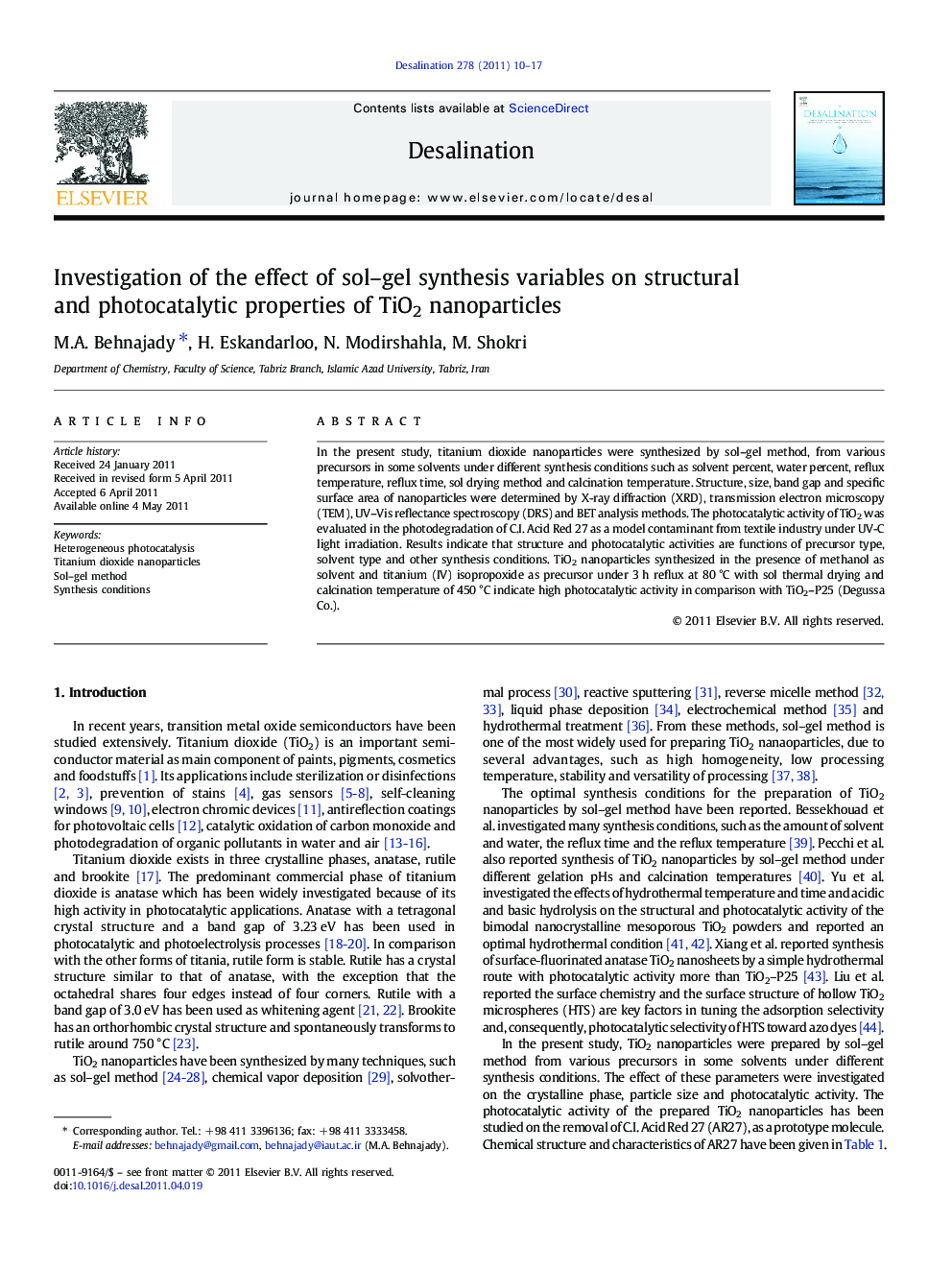| Article ID | Journal | Published Year | Pages | File Type |
|---|---|---|---|---|
| 624938 | Desalination | 2011 | 8 Pages |
In the present study, titanium dioxide nanoparticles were synthesized by sol–gel method, from various precursors in some solvents under different synthesis conditions such as solvent percent, water percent, reflux temperature, reflux time, sol drying method and calcination temperature. Structure, size, band gap and specific surface area of nanoparticles were determined by X-ray diffraction (XRD), transmission electron microscopy (TEM), UV–Vis reflectance spectroscopy (DRS) and BET analysis methods. The photocatalytic activity of TiO2 was evaluated in the photodegradation of C.I. Acid Red 27 as a model contaminant from textile industry under UV-C light irradiation. Results indicate that structure and photocatalytic activities are functions of precursor type, solvent type and other synthesis conditions. TiO2 nanoparticles synthesized in the presence of methanol as solvent and titanium (IV) isopropoxide as precursor under 3 h reflux at 80 °C with sol thermal drying and calcination temperature of 450 °C indicate high photocatalytic activity in comparison with TiO2–P25 (Degussa Co.).
Research highlights► Photocatalytic activity of TiO2 nanoparticles strongly depends on synthesis conditions. ► Synthesis variables are effective on crystallite size and structure of TiO2. ► TiO2 prepared under optimal conditions show higher photoactivity than TiO2–P25.
